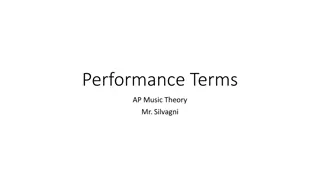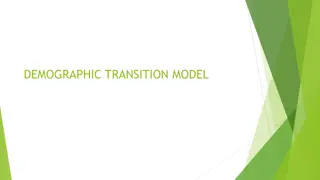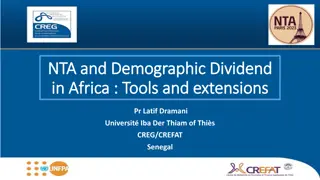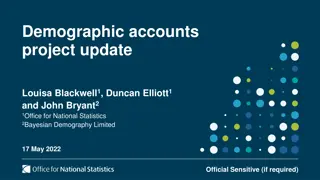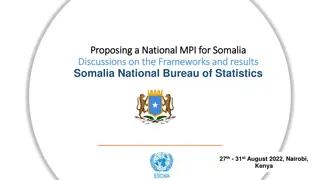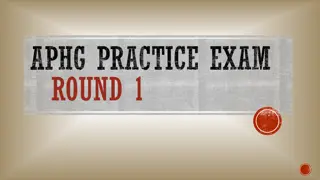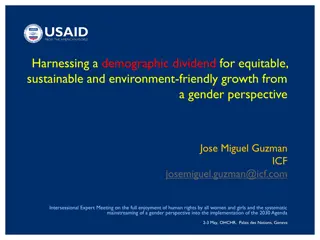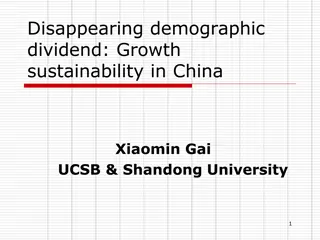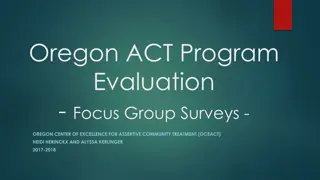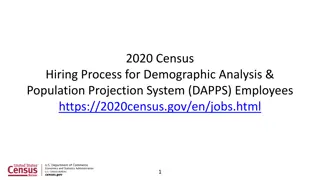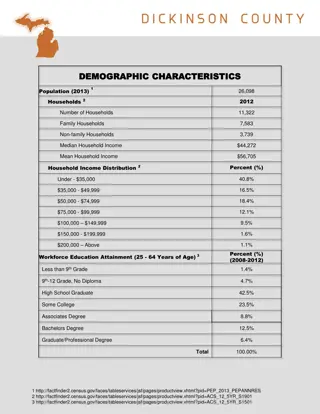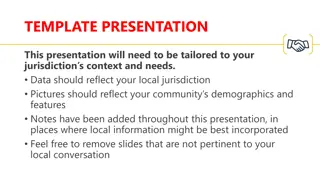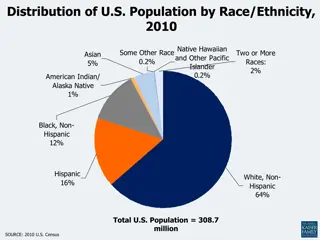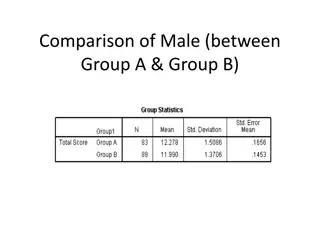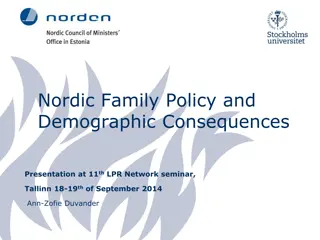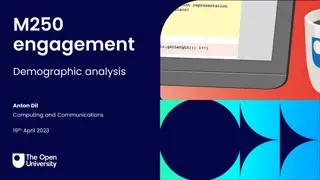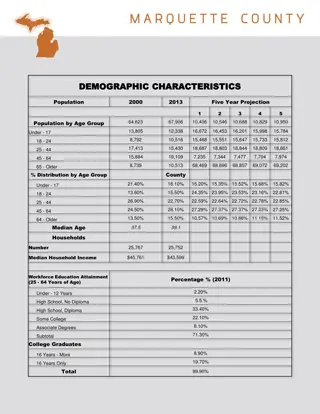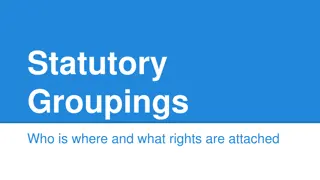Demographic Group Terms
Explore the structure and application of Demographic Group Terms (LCDGT) in cataloging, offering insights into the challenges of existing vocabularies like LCSH and the potential benefits of using LCDGT. Learn about the guidelines for classifying groups based on identity and the practical applications of LCDGT in bibliographic records. Discover how LCDGT can enhance the organization and accessibility of information on creators, contributors, and intended audiences of works.
Download Presentation

Please find below an Image/Link to download the presentation.
The content on the website is provided AS IS for your information and personal use only. It may not be sold, licensed, or shared on other websites without obtaining consent from the author.If you encounter any issues during the download, it is possible that the publisher has removed the file from their server.
You are allowed to download the files provided on this website for personal or commercial use, subject to the condition that they are used lawfully. All files are the property of their respective owners.
The content on the website is provided AS IS for your information and personal use only. It may not be sold, licensed, or shared on other websites without obtaining consent from the author.
E N D
Presentation Transcript
Demographic Group Terms Or, The Who of Cataloging Casey Mullin Western Washington University Chair, MLA-CMC Vocabularies Subcommittee MOUG Annual Meeting, Orlando, FL, February 22, 2017
Another thesaurus (?!?) Why? Information on the creators, contributors and intended audiences of works/expressions is currently trapped in LCSH ( subject ) strings 650 _0 Operas $v Juvenile $v Scores. 650 _0 Navajo Indians $v Music Genre/form and medium of performance vocabularies (LCGFT and LCMPT) have already begun to be implemented There are yet more facets to decouple LCSH not an ideal vocabulary for this purpose
LCDGTStructure Not a true thesaurus, but constructed according to strict guidelines Each term describes one group (identity) Examples: Women; Motion picture directors; African Americans No compound terms (intersected identities) Example from LCSH: African American women motion picture producers and directors Broader terms used sparingly Must always be true of any individual in that group (Example: Benedictines (no BT Catholics))
LCDGTStructure Doesn t that make for a lot of orphan terms? Instead of a complete strict hierarchy, terms are sorted into broad categories: Age Educational Level Ethnic/Cultural Gender Language Medical, Psychological, Disability National/Regional Occupation/Field of Activity Religion Sexual Orientation Social (the catch-all category)
LCDGTGuidance How are these terms used? Library of Congress has issued a Demographic Group Terms Manual in draft form http://www.loc.gov/aba/publications/FreeLCDGT/freelc dgt.html Best practices not yet developed; many open questions Recommendation: read the DGTM, use your judgment and be confident! The following examples illustrate one person s understanding of what best practice might look like
LCDGTApplication How are these terms used? In bibliographic records: MARC field 385 (Audience characteristics) MARC field 386 (Creator/contributor characteristics) Include $2 lcdgt Example #1: 385 __ Children $2 lcdgt 650 _0 Operas $v Juvenile $v Scores. 655 _7 Operas. $2 lcgft 655 _7 Scores. $2 lcgft
LCDGTApplication How are these terms used? In bibliographic records: MARC field 385 (Audience characteristics) MARC field 386 (Creator/contributor characteristics) Include $2 lcdgt Example #2: 382 11 singer $2 lcmpt 386 __ Navajo (North American people) $2 lcdgt 650 _0 Navajo Indians $v Music. 650 _0 Songs, Navajo. 655 _7 Songs. $2 lcgft
LCDGTApplication Wait? Does that mean I have to 382 01 piano $n 1 $s 1 $2 lcmpt 385 __ Pianists* $2 lcdgt 386 __ Composers $2 lcdgt 650 _0 Sonatas (Piano) 655 _7 Sonatas. $2 lcgft 655 _7 Scores. $2 lcgft * Not yet in LCDGT Technically, this is possible, but best practice will very likely discourage such boilerplate usage Draft DGTM already does (L 545) Possible rule of thumb: if you would bring out such characteristics in LCSH, bring them out in 385/386 (with more specificity in many cases!)
LCDGTApplication How far to go with audience terms? Good: 245 14 The band director's handbook 385 __ Band directors $2 lcdgt Bad: 245 14 The complete idiot's guide to classical music 385 __ Idiots [$2 lcdgt] (likely never in LCDGT!) When in doubt, leave it out!
LCDGTApplication What about place names in 370? 370 __ $g Germany $2 naf and/or??? 386 __ Germans $2 lcdgt 650 _0 Folk music $z Germany. 655 _7 Folk music. $2 lcgft Possible best practice: favor giving the geographic place in 370 over the demographic group term in 386 if they are coterminous
LCDGTApplication What about place names in 370? 370 __ $g Arizona $2 naf and 386 __ Navajo (North American people) $2 lcdgt 650 _0 Navajo Indians $z Arizona $v Music. 650 _0 Songs, Navajo $z Arizona. 655 _7 Songs. $2 lcgft Possible best practice: give both geographic place in 370 and the demographic group term in 386 if they are not coterminous
LCDGTApplication What about authority records? For works (name-titles): MARC field 385 (Audience characteristics) MARC field 386 (Creator/contributor characteristics) Don t forget $2 lcdgt For persons: MARC field 374 (Profession/Occupation) MARC field 375 (Gender) Give terms from LCDGT and LCSH in separate fields Give terms from same vocabulary in multiple $a (Eventual?) best practice: prefer LCDGT MARC field 372 (Field of activity) available as well Example: 100 1_ Amirkhanian, Charles 372 __ Computer music $a Text-sound compositions $2 lcsh 374 __ Composers $a Percussionists $2 lcdgt 374 __ Radio producers and directors $2 lcsh
LCDGTApplication What about retrospective implementation? Machine generation of LCDGT terms in 385 and 386 fields (as well as 370, 046, etc.) incorporated into: The MLA/CMC/VS project to derive faceted data from LCSH headings The recommendations of the ALCTS/SAC Working Group on Full Implementation of LC Faceted Vocabularies Authority records are part of the picture too
LCDGTDevelopment Developed in phases Pilot phases 1 and 2 completed in 2015 Assisted by ALA/ALCTS Subject Analysis Committee working group Currently in Pilot phase 3 (extended to end of 2017) As of February 2016, about 800 terms in thesaurus Hundreds of terms in the proposal pipeline Still issues to work out (e.g., local demonyms)
LCDGTDevelopment Can I propose a term for LCDGT? Yes!! (Please do!) Terms needed in current cataloging will be accepted for consideration Per LC-PSD, no retrospective projects Current cataloging includes authority records created/updated in the process SACO libraries can propose using existing Minaret system Be sure to search to see if your desired term is already in the pipeline Non-SACO libraries can submit music-related demographic terms via the SACO Music Funnel
Thank you! Questions?? Janis Young (LC PSD) jayo@loc.gov Casey Mullin casey@mullingroup.com Nancy Lorimer (SACO Music Funnel coordinator) nlorimer@stanford.edu
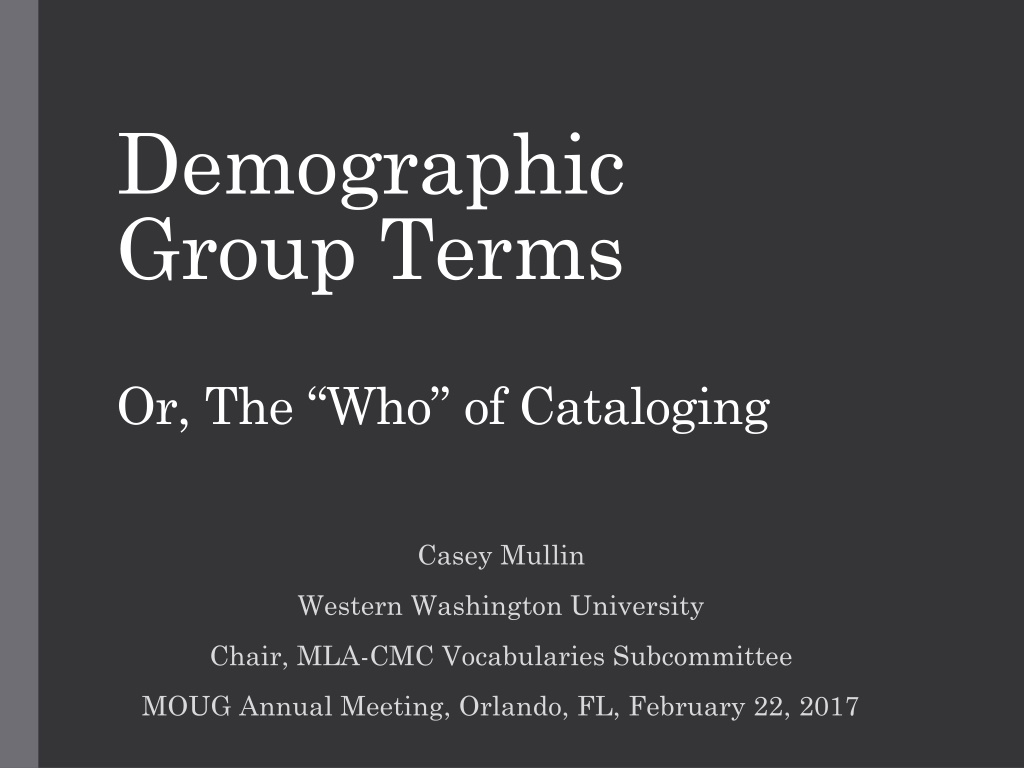
 undefined
undefined






